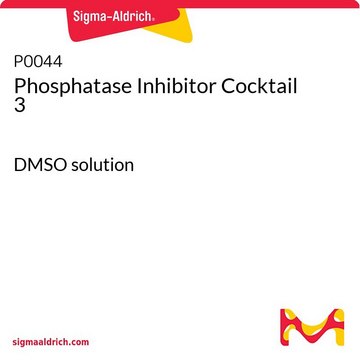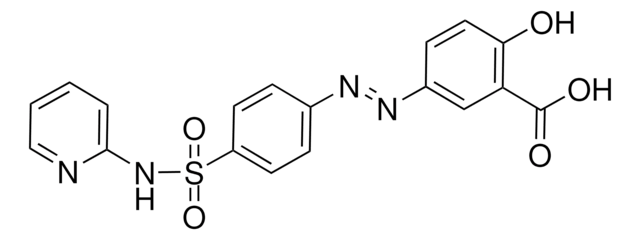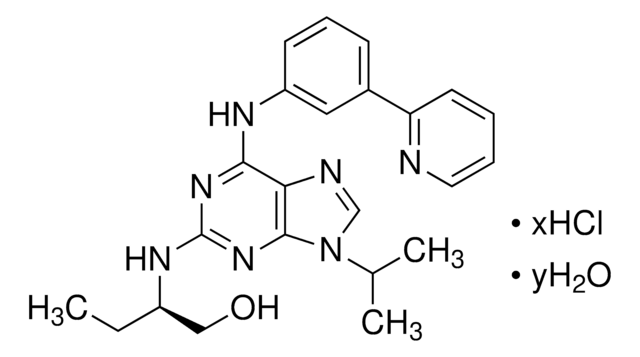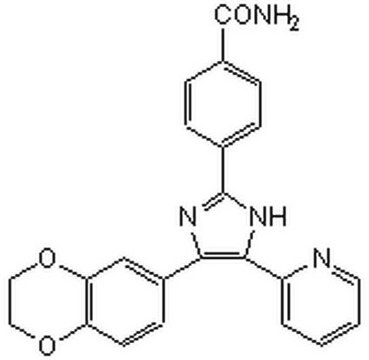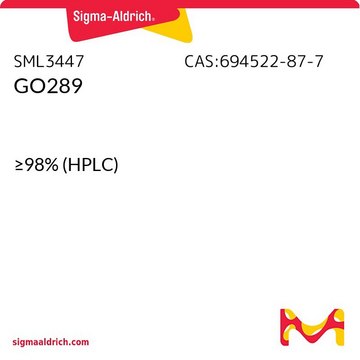Kluczowe dokumenty
SML0127
Longdaysin
≥98% (HPLC)
Synonim(y):
9-isopropyl-N-(3-(trifluoromethyl)benzyl)-9H-purin-6-amine
About This Item
Polecane produkty
Próba
≥98% (HPLC)
Formularz
powder
kolor
white to tan
rozpuszczalność
DMSO: ≥15 mg/mL
temp. przechowywania
2-8°C
ciąg SMILES
CC(C)N(C=N1)C2=C1C(NCC3=CC(C(F)(F)F)=CC=C3)=NC=N2
InChI
1S/C16H16F3N5/c1-10(2)24-9-23-13-14(21-8-22-15(13)24)20-7-11-4-3-5-12(6-11)16(17,18)19/h3-6,8-10H,7H2,1-2H3,(H,20,21,22)
Klucz InChI
REKSFCCYDQMSIN-UHFFFAOYSA-N
Zastosowanie
Działania biochem./fizjol.
Hasło ostrzegawcze
Danger
Zwroty wskazujące rodzaj zagrożenia
Zwroty wskazujące środki ostrożności
Klasyfikacja zagrożeń
Acute Tox. 3 Oral - Eye Irrit. 2 - Repr. 2 - Skin Irrit. 2 - STOT SE 3
Organy docelowe
Respiratory system
Kod klasy składowania
6.1C - Combustible acute toxic Cat.3 / toxic compounds or compounds which causing chronic effects
Klasa zagrożenia wodnego (WGK)
WGK 3
Temperatura zapłonu (°F)
Not applicable
Temperatura zapłonu (°C)
Not applicable
Wybierz jedną z najnowszych wersji:
Certyfikaty analizy (CoA)
Nie widzisz odpowiedniej wersji?
Jeśli potrzebujesz konkretnej wersji, możesz wyszukać konkretny certyfikat według numeru partii lub serii.
Masz już ten produkt?
Dokumenty związane z niedawno zakupionymi produktami zostały zamieszczone w Bibliotece dokumentów.
Nasz zespół naukowców ma doświadczenie we wszystkich obszarach badań, w tym w naukach przyrodniczych, materiałoznawstwie, syntezie chemicznej, chromatografii, analityce i wielu innych dziedzinach.
Skontaktuj się z zespołem ds. pomocy technicznej


